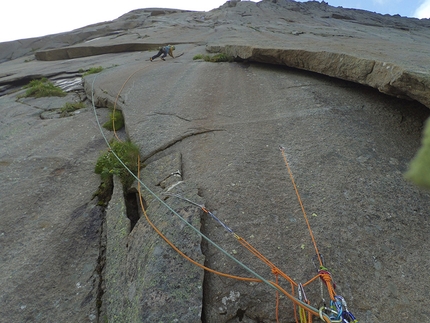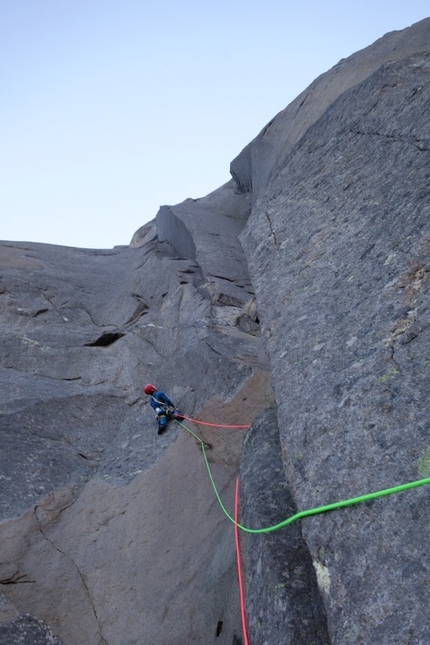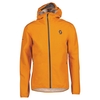New climbs on Lofoten Islands' Helvetestinden & Brasrastindan by Gerber Cucurell, Jordi Esteve

 1 / 14
1 / 14 Gerber Cucurell archive
Gerber Cucurell archive
On the 25th of May we set the alarm clock for 2:30 am and, setting off from Vinstad, we reached the base of the South Face of Helvetestinden at 5 am. We decided to take advantage of the first 5 pitches of Noensfoten, to quickly reach the upper wall, where we had a noticed a line that interested us. We then climbed eight new, not always well-protected pitches following a crack system, until we joined the exit corners. At 4 pm we reached the top. Some sections offered pleasant climbing, others turned out to be more complicated and via difficult terrain. We encounter difficulties up to N7- and named our line Rett Opp.
A few days later we added Nordside to the North Face of Ytre Brasrastindan. The story of this ascent actually began in 2016. After two previous trips, I studied some topographic maps of the area to discover unclimbed walls. The north face of Ytre Brasrastindan caught my attention as it had extremely close contour lines. It looked like a great wall, with a vertical drop of more than 800 meters. I looked for photos on the internet, but since it is such a remote place, faces the sea and is difficult to access, at the time I did not find anything. That June we explored the area, and tried to reach the main summit on the south ridge, but a huge vertical gap prevented us from continuing. We couldn't see the wall, although in the Bodø library I found a book with a photo of Brasrastindan, where the verticality of the North face could be sensed from the profile.
In 2019 Bernat Vilarrasa, Jordi Esteve and I returned to the Lofoten Islands and camped in the Horseid valley to try the wall from the west. We followed the coast past very rough terrain until we reach the base of the mountain. From there we saw the wall for the first time. In its lower part there were signs of rockfalls, so we avoided this section by ascending a 300-meter corridor located to the left of the main wall. We then continued along a ridge to the start of the difficulties. We attacked the wall via a loose vein. It was not the most attractive option, but it allowed us to move quickly. Unfortunately, on the fifth pitch, the rope dislodged a stone that hit Bernat directly on his head, breaking his helmet. Although nothing serious had happened, we realised that things were getting too complicated, so we decided to retreat.
In 2022 Jordi Esteve and I planed another attempt at the end of May. On the 29th we camped in the Selfjord valley with the aim of reaching the wall from the east. The next day we got up at 3 am and at 7am we reached the start of the loose vein we had tried in 2019 and then explored a route comprised of 20 pitches, with difficulties up to N6+ RX, some completely wet sections and a 35m, technical bold slab. At 5 pm we reached the top. We still had 8 hours of descent to reach our camp, but we felt a great relief to have mobile phone coverage once again.
Summary
1. South face of Helvetestinden
Route name: Rett Opp (7- R)
First ascent: 25 May 2022
2. North Face of Brasrastindan
Route name: Nordside (6+ RX)
First ascent: 30 May 2022
Maybe it is the first ascent of this face, we haven't found any information about other climbs.
Both routes were climbed in traditional style, and we didn’t leave any gear on the routes. We used a set of stoppers, a set of Totem Cams, Camalots #3 and #4 and a 60 m single rope.
by Gerber Cucurell
Links: https://qulusuq.com/



 Copia link
Copia link













 See all photos
See all photos


























